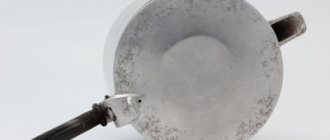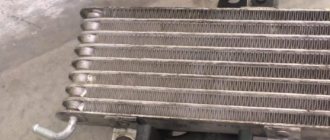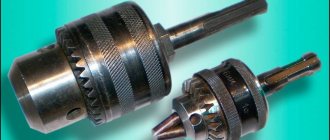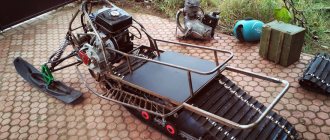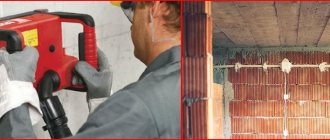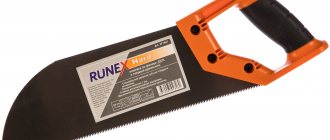A lightweight, affordable, quickly heating aluminum pan is found in almost every kitchen. Unfortunately, it darkens both outside and inside, loses its shine, and becomes covered with soot and soot. Using dirty dishes is unpleasant and unhygienic, and dirty kitchen utensils have a negative impact on the housewife’s image. Not all methods are suitable for removing black from an aluminum pan. Delicate metal is easily damaged, so gentle products are needed.
Types of contamination of aluminum cooking utensils
Housewives have to clean aluminum dishes:
- from darkening and limescale deposits;
- soot;
- stuck or burnt food.
The dishes darken and become covered with a whitish moire due to oxidation of the metal and salt deposits from the tap water. The process is enhanced by frequent boiling (for example, during periods without hot water), boiling potatoes “in their jackets,” cooking cabbage soup with sauerkraut, etc.
Soot is burnt drips and greasy deposits that have not been washed off after previous cooking. It is difficult to wipe off the bottom of the outside of cheap dishes; most often, a thin layer remains, which thickens over time and turns into an ugly dark shell. Because of this, the pan heats up worse and looks unsightly.
Stuck and especially burnt food disfigures the inside of a pot or frying pan and becomes a breeding ground for harmful microorganisms.
All of the listed contaminants must under no circumstances be scrubbed off with metal sponges, knives, etc. tools. They scratch the aluminum deeply, subsequently it quickly becomes clogged with dirt, carbon deposits and grease, and it becomes more and more difficult to wash it - and the dishes are sent to a landfill.
What not to do when cleaning
Aluminum is a fairly soft and pliable material, which is why particularly aggressive cleaning methods should be avoided.
- 1 First of all, you must stop using sharp objects. Do not scrape off blackened or burnt marks with a regular kitchen knife, scraper or wire brush. After this procedure, the surface of the product will be damaged. And if these are dishes, then particles of aluminum will subsequently get into the food during cooking.
- 2 Also, do not attempt to clean aluminum if it is hot. Otherwise, when interacting with water, this material begins to succumb to deformation, and it will be very difficult to restore the product to its original form.
- 3 Powders with abrasive particles can cause both small and quite visible scratches. They will spoil the appearance of an object made of aluminum alloy. For the same reason, you should avoid using sand or sandpaper.
- 4 Also avoid using products that contain acids and alkaline solutions. They have negative effects no less than abrasive preparations. In addition, during a possible chemical reaction, heavy metals and toxins can be released that will cause irreparable harm to the human body.
We clean the pan using traditional methods
Every home has products or substances that can be used to clean aluminum pans.
Eliminating darkening
To bleach aluminum cookware, acidic substances are used. At home, they are obtained from popular products:
- Vinegar. A 6% solution is sufficient. They moisten a soft sponge or napkin with it and wipe away the dark plaque. And then the pot or pan is rinsed well with water. The only note: when cleaning, it is better to turn on the hood or open a window.
- Sour apples. The fruit is cut and the dark marks are wiped with the pulp.
- Lemon or citric acid. The pan is filled with water so that the water level is above the contamination. Add acid powder (10 g per 1 liter) to water and boil for 15-20 minutes. The water is drained and the pan is rinsed with clean water. The method is ideal for removing dark deposits from inside dishes.
- Brine of canned vegetables (cucumbers, tomatoes), kefir or whey. Fill an aluminum container with the liquid, leave for up to 1 hour and drain. The surface is wiped with a soft sponge moistened with dishwashing gel and rinsed well.
Two more ways to restore the pan to its original shine:
- chopped or grated laundry soap is added to water and boiled for 20 minutes. Then drain and wash well with clean water;
- table salt is mixed with water in equal proportions and the resulting paste is rubbed over the discolorations;
- To remove severe darkening, use a mixture of salt and vinegar or ammonia - this method helps when the top of the dishes has darkened.
How to descale
Aluminum cookware is often used to boil water. To remove scale build-up, use the same effective home remedies.
Lemon acid. Boil water with 2 tbsp. l. lemons for 15 minutes. Remove from the stove and rinse with a sponge after cooling.
Soda. Wipe the areas with scale with the soda slurry. When rinsing, add ammonia to the water.
Kefir, brine or whey. Fill the existing liquid in the house for 3 hours, then drain and rinse with running water.
Onion. It also helps get rid of scale and soot. Peel the onion, chop and add the required amount of water. Boil in a saucepan for 20-30 minutes.
Dentifrice. Mix it with a teaspoon of dishwashing detergent, apply to the bottom and walls and leave for 24 hours.
Advice! Traditional methods are effective with a small layer of scale. If the lime deposits are old, you will have to use household chemicals. Read the instructions carefully to avoid damaging the product.
Removing carbon deposits and burnt food
Burnt food and grease stains darkened by high temperatures are defeated by:
- Salt. Pour plain clean water into the pan with the burnt dish for about 10 minutes. Then the dishes are emptied, a layer of salt is poured onto the bottom and left for 2-3 hours. Then wipe off the carbon deposits with a soft sponge and dishwashing detergent.
- Vinegar. Take water into the container and add vinegar (for 1 liter - 1 glass of the substance), bring the solution to a boil and let it cool, then wash it with dishwashing gel
- Bleach. Prepare a weak solution of a chlorine-containing stain remover, for example, “Belizna” (3 liters of water - 100 g of dry product). Fill a bowl with it and boil for 30 minutes, then remove from the heat, and when it cools down, pour it out. Remains of carbon deposits are removed with a soft sponge. Fill the pan again - this time with clean water and boil for 10-20 minutes, empty and rinse under the tap.
Cleaning away limescale
A salt deposit forms on the walls and bottom of the cookware after boiling water. Products containing acid, such as solutions of citric acid or vinegar, effectively combat it. Below are some popular methods.
Lemon acid
To get rid of salt deposits:
- Water is poured into the pan so as to cover the height of the coating.
- Heat to boiling
- Add citric acid (2 tsp per 1 liter of water) and boil for a couple of minutes.
- Remove the pan from the heat and allow to cool.
- The water is drained and the dishes are washed with soap.
Vinegar
To descale:
- Spice is poured into a pan of water at the rate of 100 ml per 1 liter of water.
- Stir, bring to a boil and turn off.
- Visually assess the condition of the scale. If the salt deposit has not dissolved or left behind, repeat the procedure after half an hour.
- The water is allowed to cool, poured out and the dishes with water are washed well.
Carbonated drinks
In the fight against lime inside the pan, Fanta, Sprite, and Coca-Cola have proven themselves well. These drinks are effective thanks to phosphoric and citric acids.
Use soda like this:
- The bottle is opened and left without a cap until all the gas has escaped.
- Fill the saucepan with the drink.
- Bring to a boil over high heat.
- They turn it off and forget about it for half a day. During this time, part of the plaque will dissolve, and part will peel off.
- All that remains is to pour out the dirty liquid and rinse the pan.
Tip: To make the gas come out faster, pour the drink directly into the pan - at the same time, you don’t have to warn your household that the soda is not for drinking.
Onion
To descale:
- The onion is peeled so that it does not stain the aluminum and cut into 4 parts.
- Place in a container pre-filled with water.
- Bring to a boil and cook for 1 hour.
- Allow to cool and pour out the water, and wash the dishes under the tap.
Dentifrice
It can also be used to remove scale, and when aluminum cookware has turned black, it is suitable for cleaning inside and out.
Procedure:
- Tooth powder is mixed with a few drops of liquid soap or dish gel.
- The composition is applied to contaminated areas or to the entire pan.
- Leave it for a day.
- Wash dishes under running water.
Potato or apple peelings
The peels of potatoes and apples contain acid that dissolves limescale.
Instructions:
- Wash and peel several root vegetables or fruits.
- Transfer to a saucepan and add water.
- Place the dishes on the fire and bring to a boil.
- Boil the contents for half an hour.
- Wait for everything to cool and drain and discard the peel.
- Rinse the dishes well with running water.
Cucumber pickle
It is poured into a dish with scale and left for a day, then the liquid is poured out and the pan is washed with water.
Advice If cleansing using the chosen method does not help, repeat the procedure.
Methods for cleaning aluminum from stains and oxides
Option 1. Acidic liquid. Plaque and dark spots can be removed by pouring kefir or sour milk, cucumber pickle, Coca-Cola onto the bottom of the dish and leaving it for 10-12 hours.
The sides of the pan can be wrapped in rags soaked in the appropriate composition and moistened with it several times, preventing it from drying out. After soaking, wash the utensils under running cool water and wipe off dirt with a soft cloth.
Option 2. Sour apples. Wipe the surface of aluminum cookware with sliced apples if they have darkened over time. After waiting about an hour, you can repeat the procedure. Then the dishes are washed and wiped with a rag or soft sponge.
Option 3. How to clean aluminum until it shines using table salt. If the pan turns black, place it in a solution of table salt at room temperature for half an hour or an hour.
To prepare the solution, use warm water and salt in a 1:1 ratio; it is important to wait until it is completely dissolved. After soaking with a sponge, clean the surface until shiny, then rinse with cool water.
Option 4. Cream of tartar. This is a classic method that has been used since the times when aluminum cookware just began to come into everyday use. Tartar forms at the bottom of containers in which wine is stored for a long time.
This precipitate is collected and dissolved in hot water. After the solution has cooled, a soft rag or napkin is well moistened in it, after which an aluminum object with traces of darkening and oxide is treated.
To polish the dishes to a mirror shine, prepare a thick paste from cream of tartar and water. Polishing will take a lot of time and require some effort.
Then the utensils are washed in cool water and wiped dry with a soft cloth. Cleaning with cream of tartar is considered more gentle compared to using citric acid or vinegar or exposure to high temperatures during boiling.
Option 5. Soda. Sodium bicarbonate is poured into a small bowl or other suitable container, a little water is added until a slurry forms. The resulting composition is applied to the darkened surface of the pan and rubbed with a soft cloth. After polishing, rinse the dishes thoroughly.
Option 6. Soap solution + polishing. Laundry soap shavings are dissolved in hot water, and utensils are soaked in it. Then they are washed and treated until shiny with a sponge using a mixture of ammonia (5 grams) and borax (15 grams).
Household chemicals
Stainless steel, aluminum, and enamel-coated utensils are well cleaned from grease stains, burning, soot, limescale deposits and lightened with the Shumanit Bagi grease remover (Israel), Amway Oven Cleaner cleaning gel (USA), and Mister Clean brand products (Russia) .
It is possible to brighten and clean an aluminum pan until it shines. Using simple household items or industrial products always available in the store, you can always admire perfectly clean dishes. The main thing is not to forget to shine the pan after use.
Adding shine
Aluminum kitchen utensils may darken over time. A very simple way to restore her color will help. The sour apple needs to be cut and rubbed on the surface of the dish with the cut. This fruit contains acid that can bleach.
Dampen a piece of cloth with vinegar (9%) and wipe the pan. The product will lighten darkened metal and give it shine.
Cleaning aluminum cookware is not a very complicated process; it is important to follow certain rules and recommendations.
Subject to these care conditions, frying pans and pots will retain their original appearance for a long time:
- Kitchen utensils can only be cleaned and rubbed when they have cooled down. Soft metal is deformed due to sudden temperature changes.
- After washing, be sure to dry the pots and pans so that there are no streaks or smudges left on the surfaces.
- Do not use hard brushes - use only sponges and cloth.
- It is not recommended to use abrasive cleaning products.
Reader Questions
Tatyana Petrovna:
“I washed my new expensive meat grinder in the dishwasher. I soon discovered that it had turned black. What to do in this situation? What means will help cope with the problem?
Answer:
Aluminum deteriorates in the dishwasher. It all depends on how much alkali is in the cleaning product and how hot the water is used. The protective layer is not destroyed immediately. If the damaged item is expensive, especially if these are parts of a new meat grinder, you should use special means, for example, rub the surface with GOI paste using a felt napkin. You need to apply the composition to the fabric and clean the product. Diallux paste from a French manufacturer is also suitable.

